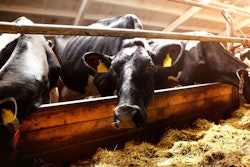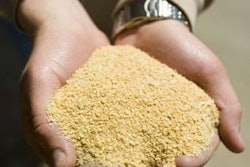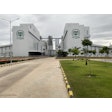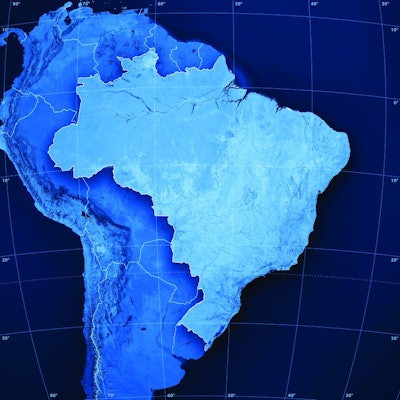
Brazil’s feed industry is growing at a slow, but steady, pace as it faces transportation issues, storage shortages and feed additive dependence.
Feed production in Brazil has experienced consistent growth in recent years; however, as elsewhere in the world, the rise in corn and soybean meal prices has had a very strong impact. Moreover, in the case of feed additives, such as vitamins, enzymes and amino acids (except lysine and tryptophan), Brazil is entirely dependent on foreign sources. The strong devaluation of the real (domestic currency) also impacts these products, quoted in U.S. dollars. This has affected feed producers and animal producers who purchase feeds.
As animal protein exporters have revenues in dollars, they have been able to mitigate high costs, but for those selling domestically, the impact has been strong because of the difficulty of being able to pass high prices along to the consumer. So it is that dairy cattle and laying hen feed producers had a sharp decline in production.
In addition, there are other variables in play, such as high inflation, that have affected many countries. Supply shortages due to the reduced corn crop also impacted production, although in 2022 harvest was good and, with this, producers expect to see the light at the end of the tunnel. However, all these factors slow the pace of growth.
Performance in 2022
Despite the situation, Brazil recorded growth from 2020 to 2021 and from 2021 to 2022. The National Feed Industry Association (Sindirações) reported that at the end of 2021 feed production reached 80.8 million metric tons (MMT), a 4% growth rate compared with 2020.
At the beginning of 2022, expectations pointed to 3.5% growth, but this figure has been revised slightly above 1%.
“This is because it was forecasted a production of 3.5% to 4% more broilers, but the Brazilian Association of Animal Protein (ABPA) adjusted this number around 1%,” says Ariovaldo Zani, CEO of Sindirações, noting that, under the circumstances, this is a good figure. It should be noted that poultry (broilers and laying hens) has the highest feed demand.
“Production of laying hens and dairy cattle is likely to fall. Broiler production will grow and swine production as well. In the case of aquaculture, it will grow a little, although it has a low share, such as pet food,” says Zani.
Corn production and the ethanol industry
Zani sees a medium-term future in which farmers will be affected.
“There is a tendency to devalue commodities, both energy and food, which can be good for the livestock industry because of the lower cost,” he says.
Another factor Zani points out is that related to China’s interest in Brazilian corn, because of the U.S. political problem over Taiwan.
“I think it has been a warning, because Brazil can be a good supplier,” he says.
But if China flirts with Brazil on the purchase of 30 MMT of corn — in addition to the 30 MMT it already exports — there will be problems, especially because of speculation.
There is also the ethanol industry in Brazil, which is well developed and has good prospects of processing some 10 MMT of corn. This means that there will be dried distillers grains with solubles (DDGS), mainly for cattle. Brazil does not have DDGS production as controlled and balanced as that of the United States, “where there are conditions to be able to offer this ingredient to chickens and pigs,” he adds.
So, this means there are 60 MMT of corn for feed, 10 MMT for ethanol, exports of about 30-40 MMT and a little for human consumption. There is enough corn in the country.
“What we need in Brazil is a government mechanism, as in the United States, which provides advanced information on how Brazilian foreign trade behaves, so that there are no surprises,” Zani adds. In this way, the local producers can enter the competition. He emphasizes that it is not a matter of controlling, but that the rules of the international market must remain.
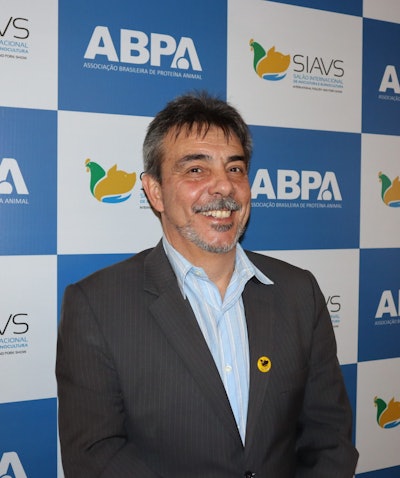 Ariovaldo Zani, CEO of Brazil’s Association of Feed Producers, Sindirações | Photo by Benjamín Ruiz
Ariovaldo Zani, CEO of Brazil’s Association of Feed Producers, Sindirações | Photo by Benjamín RuizOther concepts
Sustainability, greenhouse gas emissions, animal protein production without antibiotics, animal health and animal welfare are concepts that cover feed manufacturers, add to costs, and will have to be overcome.
Zani spoke of the dichotomy of additional cost-bearing demands — however fair they may be — and while the world seems to be moving towards that, at the same time it worries about food security, as many people are below the poverty line.
Feed production growth rate seems to have slowed but has not backed down. It is not that fewer animals are produced, but that feed conversion has decreased substantially over the past 20 years.
“In 2007, we imagined that by 2021 we would be producing 85 MMT of feed and turned out to be 80,” he says, highlighting feed efficiency, the use of feed additives, genetics of animals, all of which go along with animal nutrition.
Better efficiency results in less environmental degradation, along with lower feces production, less nitrogen and lower greenhouse gas emissions. This shows that the feed industry works to do more with less.
3 challenges ahead
Zani spoke about three particular challenges affecting Brazilian feed production:
- Transportation infrastructure: This chronic problem is about transportation being predominantly done by roads and there are few roads. More investment is required in this area, where foreign capital is normally preferred over domestic capital, which is insufficient, but road construction depends on national sovereignty, and consequently on government policies. The rail network no longer exists, although there is a large river and maritime network, such as the Arco Norte, a set of public ports, private terminals, and transshipment stations for grain transportation of Central-West Brazil, through which approximately 30% of production of that region passes.
- Storage capacity: Unfortunately, infrastructure investment in storage, which is completely public, has not been able to go with growth and evolution of raw material production. Approximately 30-35% of production has no storage available and often remains in transportation trucks. There is no private storage like in the United States.
- Additives: Although Brazil is a large animal protein producer, feed additives production as well as research and development by large companies almost disappeared 30 years ago. For various reasons, these companies decided to consolidate their production in Europe and, now more recently, in China and India. Brazil is absolutely dependent on foreign sources, which is dangerous because, without these feed additives, capacity and performance of animals is seriously compromised. Economic feasibility studies have been done to restore chemical and biochemical synthesis, but today it is almost prohibitive. What is developing well is the biosynthesis, fermentation industry, such as beta-glucans, probiotics and prebiotics, whose use has increased greatly.



